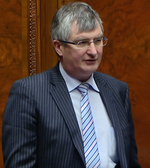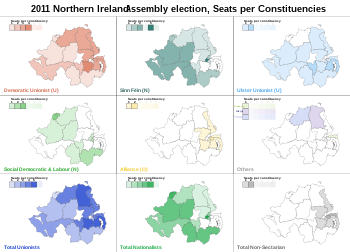
Back Eleccions generals d'Irlanda del Nord de 2011 Catalan Wahl zur Nordirland-Versammlung 2011 German Élections législatives nord-irlandaises de 2011 French Elezioni per l'Assemblea dell'Irlanda del Nord del 2011 Italian
| |||||||||||||||||||||||||||||||||||||||||||||||||||||||||||||||||||||||||||||||||||||||||||||||||||||||||||||||||||||||||||||||||||||||||||||
All 108 seats to the Northern Ireland Assembly | |||||||||||||||||||||||||||||||||||||||||||||||||||||||||||||||||||||||||||||||||||||||||||||||||||||||||||||||||||||||||||||||||||||||||||||
|---|---|---|---|---|---|---|---|---|---|---|---|---|---|---|---|---|---|---|---|---|---|---|---|---|---|---|---|---|---|---|---|---|---|---|---|---|---|---|---|---|---|---|---|---|---|---|---|---|---|---|---|---|---|---|---|---|---|---|---|---|---|---|---|---|---|---|---|---|---|---|---|---|---|---|---|---|---|---|---|---|---|---|---|---|---|---|---|---|---|---|---|---|---|---|---|---|---|---|---|---|---|---|---|---|---|---|---|---|---|---|---|---|---|---|---|---|---|---|---|---|---|---|---|---|---|---|---|---|---|---|---|---|---|---|---|---|---|---|---|---|---|
| Turnout | 55.7% ( | ||||||||||||||||||||||||||||||||||||||||||||||||||||||||||||||||||||||||||||||||||||||||||||||||||||||||||||||||||||||||||||||||||||||||||||
| |||||||||||||||||||||||||||||||||||||||||||||||||||||||||||||||||||||||||||||||||||||||||||||||||||||||||||||||||||||||||||||||||||||||||||||
Election results. Voters elect 6 assembly members from the 18 constituencies. | |||||||||||||||||||||||||||||||||||||||||||||||||||||||||||||||||||||||||||||||||||||||||||||||||||||||||||||||||||||||||||||||||||||||||||||
| |||||||||||||||||||||||||||||||||||||||||||||||||||||||||||||||||||||||||||||||||||||||||||||||||||||||||||||||||||||||||||||||||||||||||||||
The 2011 Northern Ireland Assembly election took place on Thursday, 5 May, following the dissolution of the Northern Ireland Assembly at midnight on 24 March 2011. It was the fourth election to take place since the devolved assembly was established in 1998.
It was held on the same day as elections for Northern Ireland's 26 local councils, the Scottish Parliament and Welsh Assembly elections, a number of local elections in England and the United Kingdom Alternative Vote referendum. As in the past, the 2011 election to the Assembly was conducted using the single transferable vote (STV) system of proportional representation. The 108 seats were contested in 18 constituencies by 218 candidates, including 15 independents and the nominees of 14 separate political parties.
1,210,009 individuals were registered to vote in the 2011 Assembly election (representing an increase of 9.2% compared to the 2007 Assembly election).[1][2] Turnout in the 2011 Assembly election was 55.7%, a decline of almost seven percentage points from the previous Assembly election and down over 14 percentage points from the first election to the Assembly in 1998.
As in the 2007 election, the Democratic Unionist Party (DUP) and Sinn Féin (SF) remained the two largest parties in the Assembly, with the DUP winning 38 and Sinn Féin winning 29 of the Assembly's 108 seats. The Ulster Unionist Party (UUP) won 16 seats, the Social Democratic and Labour Party (SDLP) 14 and the Alliance 8, while one seat each was won by the Green Party, Traditional Unionist Voice (TUV) and an independent candidate.
Following the results of the election, Peter Robinson of the DUP and Martin McGuinness of Sinn Féin were nominated and subsequently re-elected as First Minister and deputy First Minister on 12 May 2011. The sole change to the Northern Ireland Executive was that the UUP lost a ministerial post to the Alliance.
Cite error: There are <ref group=lower-alpha> tags or {{efn}} templates on this page, but the references will not show without a {{reflist|group=lower-alpha}} template or {{notelist}} template (see the help page).
- ^ "Electoral Office for Northern Ireland: Eligible Electorate Statistics" (PDF). Archived from the original (PDF) on 21 July 2011. Retrieved 7 May 2011.
- ^ "Electoral Office for Northern Ireland: Registered Voter Statistics" (PDF). Archived from the original (PDF) on 21 July 2011. Retrieved 7 May 2011.








